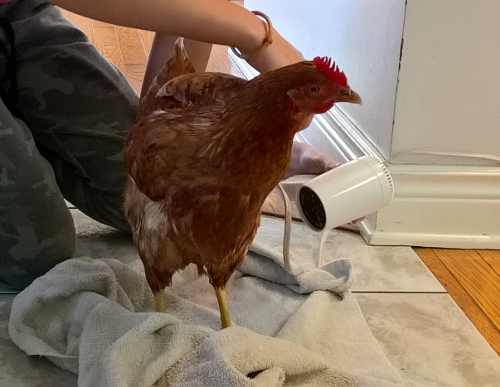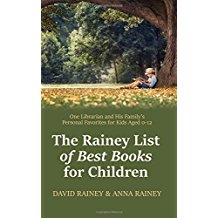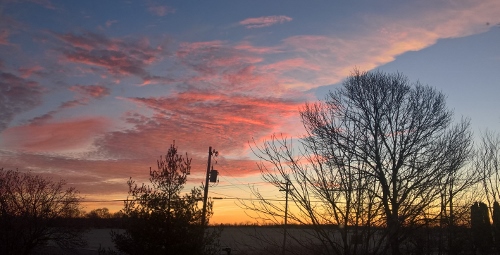Here we are in a December world full of snow so crunchy that it sets Miss 15’s teeth on edge. The bunny and the chickens, including a gorgeous new rooster, are warm in their insulated places, and our older dog Rex has graciously allowed young Sparky a (small) place in the barn. Inside, our fire is roaring and I bring cups of tea to anyone studying away from the fire.
Apparently, though, the hot tea is not completely necessary. It seems that computer ‘mining’ for ethereum, the latest cryptocurrency, creates a lot of heat. I’ve also been told that it’s very efficient to study where it is cooler.
Homeschooling
And studying is happening. Lots of it. Biology, logic, math, French, Dutch, Bible, English, Omnibus, physiology, accounting, and more. I am pleased by how the girls are finding their own study patterns. Miss 17 likes to do little bits of many subjects each day, and as long as she works every day, she progresses. Miss 15 prefers to spend hours on her big challenge, biology, and then focus on only a few other subjects before her headache gets bad. She has even had a few days without headaches, and after years of concussion-related problems this is a great blessing.
Miss 15, frustrated with BJUP’s Elements of Literature because its reading selections are inherently unimportant, has switched to Omnibus 1. That has its own challenges, but no one can say that the readings are useless. Omnibus 1, a Christian guide to classical literature and history, begins with Genesis, Exodus, the Code of Hammurabi, and the Epic of Gilgamesh. I’m not sure yet about Gilgamesh—the story is quite something—but it was undoubtedly part of Abram’s life and knowing the culture he came from gives insight into his background. In the meantime, we also have to consolidate the basics of literary analysis, and we have the Fundamentals of Literature study guide I posted recently to help us.
On the other hand, BJUP literature is a good fit for Miss 17 but taking their entire American Lit course is a bit much, especially for a Canadian. So we will cherry pick our way through the American Lit course, learning a Christian way of looking at literature, and adding on a chapter of humor and some Canadian literature as well. A fringe benefit of the BJUP course is that it gives a good introduction to US history as well, just as the ancient lit of Omnibus 1 is also essentially a peek into the ancient world.
Miss 17 is studying James Madison Critical Thinking for logic. I’ve gone through part of it with another one of my children before but got stuck at a certain point and had to let her go on by herself, which she did admirably. This time we are actually doing it together, so I really do need to understand. With the help of Kahn Academy, I realized that my problem was simply that I expected logic to make sense and represent truth whereas it is, at certain points, merely a game with certain rules—at least according to some theories of logic which are still being debated by brilliant people in ivory towers.
One highlight of the past month was ‘Leadership Lessons from Vimy Ridge’ with Rev. Dr. John Pellowe, a Remembrance Day presentation sponsored by CARDUS. If you ever have a chance to attend this presentation, you won’t regret it.
Occasionally homeschoolers notice unexpected gaps in knowledge. With the advent of electronic Bibles there is much less practice remembering where in the Bible a certain book is. So we are working on that. I found a Quizlet to help, and yesterday the girls spent quite a bit of time playing Bible Racko, a home-made alteration of the game Racko that uses index cards with Bible names instead of numbers.
Life
This has been a time of enormous changes in our family. Miss 20 has moved into an apartment with her older sister, a bedroom was freed up at home, and the ‘Little’ Misses now each have their own room. There is less laundry and chatter, more texting, and even sisterly group chats on Facebook, something I did not even know was possible. Change is hard.
But some changes are good, and Miss 15 is feeling better many days. I’ve been learning about pain, reading medical papers, studying books recommended by doctors, applying nutritional concepts, and also understanding more about homeschooling with pain. Working memory, the librarian of our minds that accesses our memories when we need them, is a fascinating thing but easily derailed. Mind mapping, developed by Tony Buzan, seems to be a valuable tool. Of course, it is completely counterproductive to change study methods when things seem to be working, but it is good to have some knowledge of alternative techniques to help tweak learning patterns if necessary.
We have also worked on chicken health. Did you know that if a chicken is sick it can be helpful to give her an Epsom salts bath? Of course, that also necessitates blow drying, and some time in a warm house under observation. So, for the first time ever, I watched a chicken make a nest: she sits down, carefully selects a piece of straw (yes, straw in the house!) and then tosses it over her shoulder. After a few hours of this, she’s sitting in a nest made of just the right bits of straw.
For a month now I’ve had no stamina at all and often even the smallest everyday tasks have been an enormous challenge. I am grateful that I can spend the homeschooling time sitting (or even lying) down, and that things like laundry and kitchen work can be done in little bits spread out between more sedentary activities. I am so thankful that I can still read and think! And, in a sense, I am even grateful for my poor health, since much of the reading and studying mentioned above would not have happened if I had been able to rush about as usual.
There is an essay, very influential in the classical schole approach to homeschooling, that discusses work, leisure, and culture. In “Leisure: The Basis of Culture,” Josef Pieper’s definition of leisure is radically different from the contemporary one, and he emphasizes that the only true leisure we can experience is rooted in worship. This landmark piece in 20th century philosophy considers ideas from the Greeks to the previous century from a Roman Catholic point of view and would be worth serious study. The whole idea of culture is vital for us homeschoolers to understand, especially in light of Paul’s command in Ephesians 6:4 to enculturate our children in the culture of the Lord. In any case, I’ve used my ‘leisure’ while ill to learn and in that sense leisure is the basis of culture, although that is only the tiniest fraction of what Pieper is writing about.
Book
I also completed a number of books:
Just Do Something by Kevin De Young, a short, powerful book about making decisions. Here is an even briefer explanation of similar ideas in a sermon on ‘Your will be done’ based on Matthew 26:36-46 and Lord’s Day 49 of the Heidelberg Catechism.
Anthony Van Leeuwenhoek and his “Little Animals” by Dobell, a collection of Van Leeuwenhoek’s own descriptions of what he saw through his microscopes, edited by an expert. It is like visiting with “an enthusiastic, naïve genius sitting across from you and telling of the exciting world he sees for the first time,” giving glory to God in his discoveries.
Leisure: The Basis of Culture by Josef Pieper, which contains the essay discussed above; I did not read the second essay thoroughly.
The Mind Map Book by Buzan, a colorful, creative way of organizing ideas, notes, or projects that seems to be very effective for some. After I learned to make mind maps I started dreaming them, but it is still a bit more intense than my usual way of taking notes and takes a bit of extra effort I have ‘no time’ for. I think mind mapping may reflect the intenseness of the leisure mentioned by Pieper in the essay I just discussed.
The Wealthy Barber, apparently Canada’s all-time best-seller. This says something about Canadians as well as something about the book which is both humorous and full of common sense. We assign it as part of homeschool personal finance (which also includes The Treasure Principle and Dave Ramsey’s Foundations in Personal Finance for High School) and I both laugh and learn each time I read it.
The Cat of Bubastes by George Henty which is my favorite book by Henty. It includes lots of lush greenery and nature, we bump into Moses, and we learn about some background ideas of Egyptian religion. Most fascinatingly, however, we learn about the one true God from a completely different point of view. This old teen novel is an excellent accompaniment to the study of Exodus.
When Tides Turn by Sarah Sundin, recommended to me by Miss 15 as the best of her Reading Week books. It’s an exciting, Christian, thought-provoking war story with the requisite bit of romance.
To balance out the American point of view of When Tides Turn, I read Hilda van Stockum’s war novel for children, The Winged Watchman, based in the Netherlands. I had never read it before but it is a beautiful story of trust, good, evil, and the importance of thinking as well as acting. And when the little sister accompanied her mother’s Hail Mary’s with ‘Mary, Mary quite contrary,’ I laughed aloud.
Since I have health issues, I skimmed through Green Smoothies for Life and found a list of super-simple detox methods that would be easy to implement and that have been recommended elsewhere for other health reasons. They are fun, too, and include scented Epsom salts baths.
If you have electronics you need either a very patient young person to give you the Essential Tips and Shortcuts, or the book Pogue’s Basics. Mr. 22 is very patient and knowledgeable, but after a certain number of questions I don’t want to impose on him even more, especially since I sometimes forget what he told me earlier. So I really enjoyed what David Pogue had to say.
I love books, so books about books are a goldmine to me. The Rainey List of Best Books for Children is one of the best book lists I’ve read, up-to-date, Christian, and full of fun for ages 0-12. If you want to do your kids a favor, do get this book.
The best doctors assign reading. Here’s an assigned book that covers concussions and pain as well as many more conditions: The Brain’s Way of Healing by Norman Doidge. Its ideas are so cutting edge that they seem almost crack-pot, but the book is full of documentation from scientific literature. And—surprisingly, or perhaps not— some of the ideas intensify the wisdom of Charlotte Mason’s focus on attention, music, outdoor time, movement, diligence, and great thoughts instead of franticness.
Our Bible reading has been unusual. Because we do it at meal times, and because people are often missing, we have been going through our main readings rather slowly. When my husband is home, we read Genesis; when both of the girls are home we continue in Jeremiah; and otherwise we go through Psalms and Proverbs following a simple formula. We have been reading a lot of Psalms and Proverbs. In my personal reading I have just finished Hebrews and I think I finally understand it a bit after reading it many dozens of times through the years, because this time I focused on the big picture.
As for my resolutions for 2017, they have radically altered. Rather than walking 10,000 steps a day, I now aim for 2000-3000, except on days when I feel too tired even for that. Rather than trying, vainly, to get the words of Romans into my head in the right order, I am now focusing on general overviews of other epistles. And dealing with those little notes that clutter up my desk is not as important as filing the huge stack of papers, mostly medical, that are cluttering up both my space and my mind. Also, I’m trying to understand how to set priorities and plans for next year, learning from the past and trying to avoid its mistakes in the future.
How have homeschooling and life gone for you at the end of 2017? Are you content with the things you did? Thinking back, have you been able to learn a few things that you can tweak in 2018?
—
If you enjoyed this article, you might want to follow me on Google+ where I often mention helpful or interesting ideas, or connect with me on GoodReads where I share what I read.
Disclosure: I am not compensated for mentioning any of these resources or books.
This article may be linked to Raising Homemakers, Saturday Reviews, Booknificent Thursdays, 52 Books in 52 Weeks Challenge, Literacy Musings Monday, and The Book Nook.







